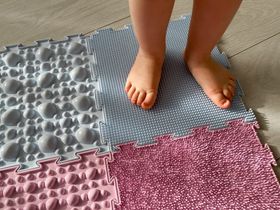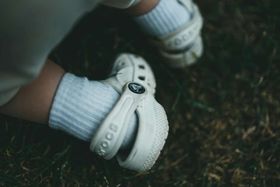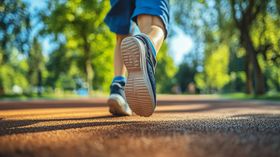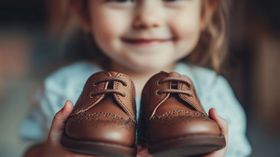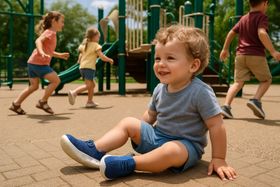Helping Your Little One to Walk on Their Own: A Parent's Guide
Updated December 6, 2024
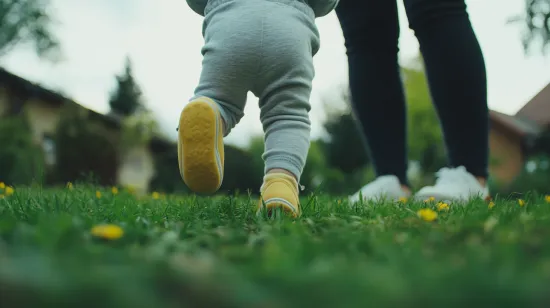
Watching your child take their first wobbly steps is an exciting milestone. As a parent, you may be thinking about how to support and encourage your little one to start walking.
Before a child starts walking, they typically pass through several developmental stages, such as sitting and crawling. Watch for signs that your baby is ready to walk—like pulling themselves up to stand, crawling on furniture, and standing independently. You can expect them to start walking independently between 10 and 18 months.
Here are some effective strategies you can use to help your child on this journey:
Exercises To Help Your Baby Walk
Encouraging your baby to walk can be an exciting and rewarding experience, but remember that each child is unique and will develop at their own pace. The goal is to make sure your child is confident and comfortable at all times. Here are a few activities to help your little one take their first steps:
Cruise and Kick
Place a ball on the ground next to your baby's feet as they cruise along furniture. They may kick the ball accidentally at first, but with you returning it to them, they'll soon start lifting a foot intentionally. Encourage them to practice kicking with both feet by placing the ball on either side.
Holding Toys
While they are cruising, you can give your baby tiny, lightweight toys or objects like egg shakers or small bean bags. This activity helps them practice balancing their trunk and lower body. It also discourages them from extending a hand towards you, a step towards independence.
Climbing the Stairs
Stair climbing can help your baby develop balance and strengthen their leg muscles. Ensure to supervise them closely during this activity and allow them to slowly climb on their hands, knees, and feet. This trains your baby to coordinate their upper and lower body movements.
Assisted Walking
Try assisted walking by standing behind your child, gently holding their upper arms, and helping them stand. They will naturally twist their hips, and their feet will follow suit. Continue practising until your baby signals they've had enough.
» Find the best shoes for a baby that's just learning to walk
What To Avoid When Teaching Your Baby to Walk
While teaching your baby to walk, certain things can potentially hinder their progress. Here's what to avoid:
- Don't push them: Even if your baby is cruising or standing, they might not be ready to walk independently. Forcing them to walk before they're ready can lead to frustration. Instead, celebrate their small accomplishments, like standing unaided or taking a few steps before sitting back down. This reassures your child they are loved and supported.
- Avoid baby walkers: aby walkers may seem helpful, but they can be risky and delay the development of walking. They can also lead to accidents as babies can move fast and reach potentially hazardous places. Walkers also promote an unnatural walking pattern. Opt for toys or equipment like a push wagon or baby trolley that babies can stand behind and push.
- Don't run ahead of your baby: This can be more frustrating than fun for your little one. Let your child set the pace. If they are trying to walk towards you, let them reach you instead of moving away. Celebrating their success will motivate them to keep trying.
» Is your kid walking on tippy toes? Pick the shoes that will help them walk properly
Selecting the Right Shoes
Teaching your child to walk is a journey full of ups and downs, filled with moments of triumph and the occasional stumble. It requires patience, support, and the right strategies. Remember that every child develops at their own pace, and the goal is to make the journey enjoyable and confidence-building for your little one.
In addition to these tips, consider picking the right footwear. The pre-walker shoes from the First Walkers collection can help support your child's developing feet. By doing so, you can ensure that your child’s first steps into the world are as safe and comfortable as possible.

